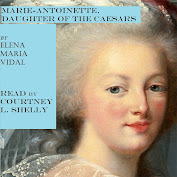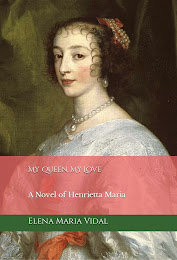 |
| Queen Charlotte's Ball, 1950 |
Every culture, civilized or not, has coming-of-age rituals, which usually have something to do with puberty, marriage or both. The custom of young girls being presented to society in a formal, ritualized community event, intended as a signal to all the bachelors that the maidens have attained a marriageable age, is one which pervades many societies and social classes. While in Anglo-Saxon society the "debut" was seen as the purview of the wealthy and privileged, in Latin American cultures fifteen-year-old girls from all walks of life have a quinceañera ball. In England a young lady's "coming out" was marked by her presentation at court, usually to the Queen, if there was one. In France, young ladies were not presented to the Queen until after they were married; hence the presentation at court marked the final glorious punctuation to her initial debut into society. In France there is no longer an enthroned monarch to whom the young ladies might be presented. In England, where there is a king and a queen, court presentations have been abolished. However, some enterprising French socialites have initiated Le Bal des Débutantes where wealthy young ladies may again be launched in Parisian high society. The latest ball was opened by a genuine Bourbon princess. Some left-wing American celebrities were also present, which is ironic, since debutante balls are distinctly vestiges of the ancien régime. It reminds me of the old Revolutionaries vying for aristocratic titles at Napoleon's court.
All of which brings me to The Season (W. W. Norton & Company, 2019) by Kristen Richardson. I thought it would be a history of the custom of "the season" enjoyed by debutantes in Merrie Old England, as torridly portrayed in the pseudo-historical Netflix fantasy series known as Bridgerton. I thought it would have all about the Mitfords, the real Royal Family and the scandals of the Duchess of Argyle. However, there was much more about America in the book; England and the infamous Margaret Whigham are hardly mentioned while Pamela Digby Churchill does not appear at all. (!) Instead there is much about the Astors, the Vanderbilts, Consuelo, and New Orleans' Mardi Gras. Ms Richardson makes a point of emphasizing her progressiveness by asserting that she was never a debutante, although she certainly could have been one, as she is descended from lineages of debutantes on practically every branch of her family tree.
While sighing over the patriarchy and the semi-enslaved status of most women who had the misfortune to live before 1973, Ms. Richardson crafts a lively history of the rituals of "coming-out" and how they "empowered" young women by giving them temporary control and agency over their bodies. In America, particularly in New York City, being invited to a debutante ball given by one of the 400 was a sign that one had arrived in the best society. In the rest of the country, towns and cities would debut their daughters in varying degrees of glamor as a way not only to find husbands for the daughters but to elevate entire families and even the fathers' businesses, if they had one. They usually did, as even the wealthiest of American men were expected to work, unlike their European counterparts. In the South, particularly in New Orleans, the debutante balls became confounded with Shrovetide customs and rituals, and thus became a part of the Carnival celebrations. In New Orleans the various balls were hosted by secret societies called "Krewes" and membership in them depended upon many things but mostly on ancestry and family ties. Most interesting is how many prosperous African-America families began debutante traditions for their daughters, with an emphasis upon the young people who took part learning and practicing their manners and waltz steps. Prizes were awarded and sometimes even scholarships for college.
In this enthralling history of the debutante ritual, Kristen Richardson sheds new light on contemporary ideas about women and marriage.
Kristen Richardson, from a family of debutantes, chose not to debut. But as her curiosity drove her to research this enduring custom, she learned that it, and debutantes, are not as simple as they seem.
The story begins in England six hundred years ago when wealthy fathers needed an efficient way to find appropriate husbands for their daughters. Elizabeth I’s exclusive presentations at her court expanded into London’s full season of dances, dinners, and courting, extending eventually to the many corners of the British empire and beyond.
Richardson traces the social seasons of young women on both sides of the Atlantic, from Georgian England to colonial Philadelphia, from the Antebellum South and Wharton’s New York back to England, where debutante daughters of Gilded Age millionaires sought to marry British aristocrats. She delves into Jazz Age debuts, carnival balls in the American South, and the reimagined ritual of elite African American communities, which offers both social polish and academic scholarships.
The Season shares the captivating stories of these young women, often through their words from diaries, letters, and interviews that Richardson conducted at contemporary balls. The debutantes give voice to an array of complex feelings about being put on display, about the young men they meet, and about what their future in society or as wives might be.
While exploring why the debutante tradition persists―and why it has spread to Russia, China, and other nations―Richardson has uncovered its extensive cultural influence on the lives of daughters in Britain and the US and how they have come to marry. (Read more.)
The Frederick Towne Mall was the site of the Mardi Gras Ball where I danced as a Mardi Gras "princess" in 1980. It was an ugly mall, even by the low standards of the 1970's, with lots of poured concrete. But its size meant there could be 2 or 3 bands, with different kinds of music and so we, my escort and I, walked the length of the mall, back and forth, stopping to dance if we heard a song we liked.. The League of Women Voters hosted the event, held on the Saturday before Shrove Tuesday, calling it "Mardi Gras." Green, purple and yellow balloons were everywhere, with beads and streamers. Eighty girls from the Frederick, MD community were invited to wear white evening gowns and be "presented" to the Mardi Gras Queen, chose from among the "princesses" by lottery, as well as to the "King Comus," chosen from among the town businessmen. Everything went smoothly, except for one too many whiskey sours, which inspired me to flirt outrageously, not with my escort, the scion of an old Frederick County family, but with another girl's date, a devilish ne'er do well. Very bad form. I still apologize to George every time I see him.
Here is a excerpt of The Season:
The debutantes we think of today, bowing deeply in frosty dresses, originated and evolved in England and America quite simply because they were needed to solve a problem. The Protestant Reformation in 16th century England and northern Europe ended the extremely convenient practice of cloistering unmarriageable girls in convents. While Catholic aristocracy in Europe continued this practice, the English aristocracy now had a daughter problem. Protestants, you see, don’t have convents. When an exasperated Mr. Bennett says of his five daughters in Jane Austen’s Pride and Prejudice: “What’s to be done with all these girls?” he was speaking to a marriage problem that had existed, unresolved, for several hundred years already. The Reformation left wealthy or titled Englishmen with a glut of daughters, whose marriages had to be considered most delicately since, by law, they could not inherit their fathers’ estates. The type of marriage the debutante ritual would provide was safe—the girls were presented to vetted company—and prevented a bad marriage from dragging down the status of an entire family, like Lydia’s threatened to do in Austen’s novel.
To understand how and why the ritual developed specifically in England and its colonies requires considering to what extent the marriage market was indeed a market, born, not coincidentally, during England’s long, slow industrialization. England experienced commercialization earlier than did other countries due in large part to the social upheaval that followed the Reformation. Free market experimentation was destabilizing and changed the way people thought and behaved, replacing guaranteed income from inherited land with the boundless possibility of new speculative ventures. (Read more.)
The difference between a cotillion and a debutante ball, HERE.


















No comments:
Post a Comment